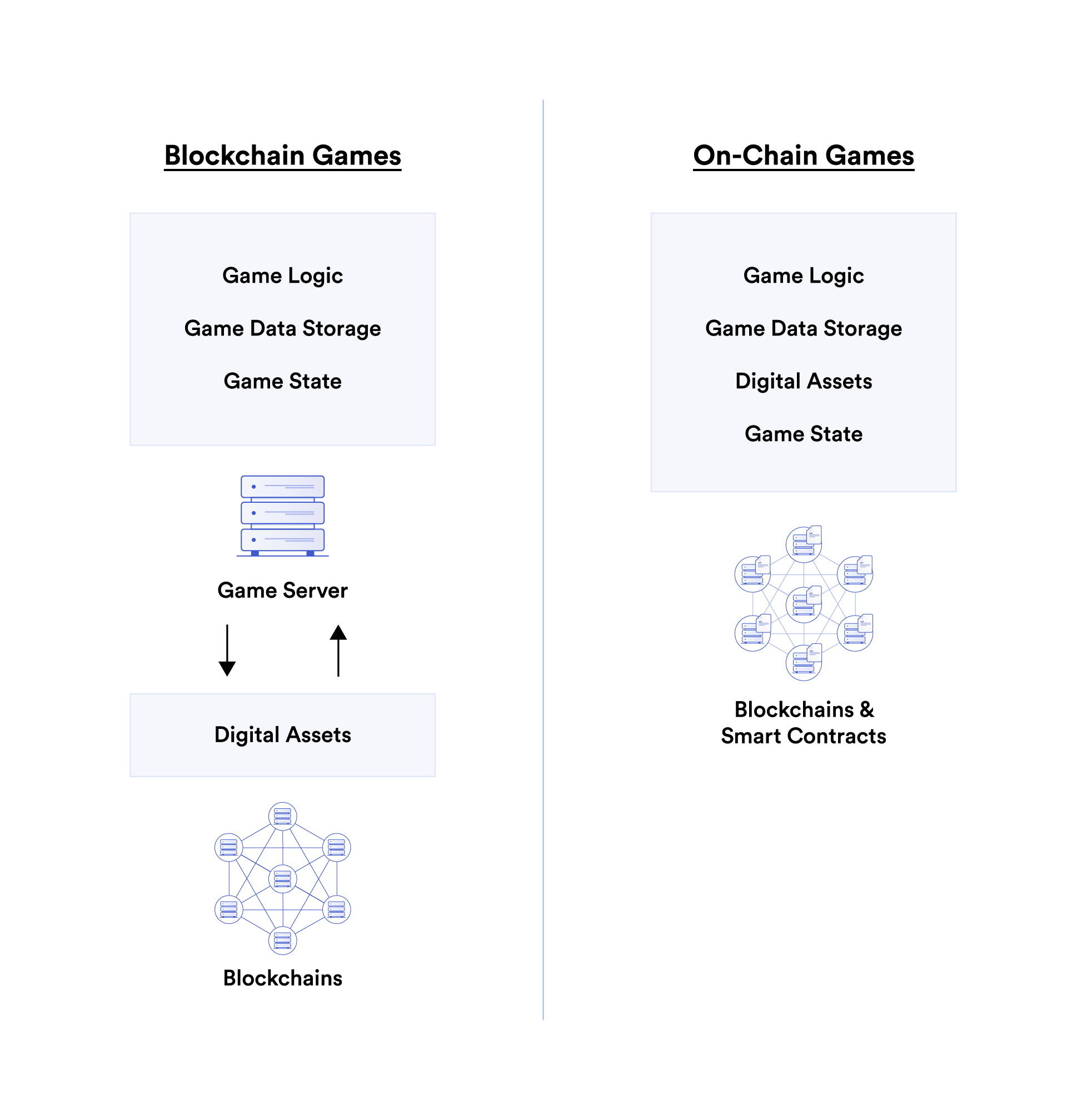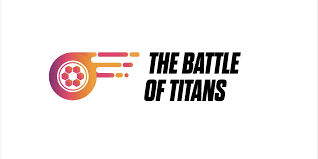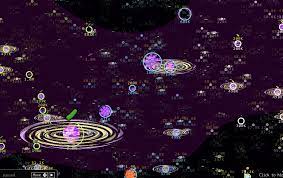What is Game Onchains? Game Onchains refers to game titles built and operated entirely on Blockchain. This could help make the game transparent, opening up avenues for integration with the crypto economy and the broader decentralized ecosystem. So what’s special about onchains games? Let’s find out with Weakhand in this article.
Before jumping into the article, everyone can refer to some of the following articles to understand better:
- The road to bringing GameFi to Mass Adoption still has many challenges
- What is GameFi? GameFi’s operating mechanism
- What is Monsterra? Overview of the game Monsterra
- What is Wreck League? Overview of the game Wreck League
What is Onchains Game?
GameFi has long been considered one of the core potential areas in the Crypto market. Built around original digital assets and serving a global audience in a variety of ways. GameFi is the perfect candidate to leverage attestation, verifiable on-chain asset ownership. However, first-generation GameFi games still do not meet the desires and expectations of players.
Therefore, onchain games are considered the next generation of games built on the blockchain. Game Onchains refers to games built and developed entirely on Blockchain. This means that every aspect of the game other than the user interface (the visual part of the game that the player sees on their screen) is implemented on the Blockchain.
The main difference between onchain games compared to traditional Blockchain games is the implementation of game logic directly into the Smart Contract and the storage of game state (such as name, game rank,…) on Blockchain instead of storing it on a centralized server. This helps users to publicly check all data and game logic on the Blockchain, thereby improving transparency and significantly increasing security for the game.
How Does Onchains Game Work?
Game Onchains requires games to only use Smart Contracts to store logic and data in their games. Game logic dictates the rules in the game.
For example, if it is an online card game (TCG), the game logic dictates how the match starts, which cards can be played in what order, when the match ends, etc. It is the core of the game and in Game Onchains, these aspects are recorded on the Blockchain in the form of Smart Contracts.

The difference between regular Blokchain games and onchains games
Smart Contracts are also used to create, distribute and move digital assets. In the online card game (TCG) mentioned above, the digital assets used will be trading cards represented as NFTs. Digital assets (NFT) are one of the most widely used technologies in Blockchain games such as: Axie Infinity, God Unchained, Illuvium,…
Challenges of Onchains Game
There are a number of reasons why most blockchain games at the moment are not onchain games such as:
Blockchain speed and scalability
Current platform Blockchains are not like centralized servers operated by thousands of people globally, so they have much lower processing speed and scalability. These two technical factors are extremely important to build a fast-paced game and provide a good user experience.
These technical limitations are the reason why the majority of onchain games today are limited to turn-based games like TCG or strategy games because Smart Contracts are not fast enough to handle the game logic for the Fast-paced games such as: Moba games, FPS,…
Activities take place transparently
Transaction information or Smart Contract is deployed on Blockchain so all information is transparent and anyone can see. While this is good in the case of financial transparency, it limits game design possibilities because there is no privacy.
For example: Some game mechanisms and effects such as: The fog effect during war in Moba games or the sudden appearance of monsters in FPS games are almost impossible to do because these games rely on players having incomplete information. There are a number of solutions that have been implemented but the problem is still not completely resolved for large-scale onchains games.
Attacked by bots
The design of onchains games includes active Smart Contracts to implement game logic and operations. There is no third party involved in game building and development activities, so there will not be an anti-bot mechanism participating in gaming with users. This can reduce the player’s experience with certain games, especially those with large rewards.
Technical limitations
The basic reason why no onchains game has been successful is because the technical infrastructure is not ready and therefore most onchains games today only exist in conceptual form: Simple gameplay , buggy client application, limited player participation, and other developments.
Existing infrastructure and developer tools are limited. Especially with slow and cumbersome EVMs, existing Solidity data models were not conducive to complex game development, and none of the main network chains were viable deployment targets for games.
Fortunately, there are solutions on the market today to solve these problems. Several development teams have built infrastructure specifically for Gaming. For example: Lattice is developing the Solidity framework and compatible tools (indexing, state synchronization, …) that can simplify game development. Other development teams like Dojo , Argus and Curio are also working on infrastructure platforms.
Benefits of Onchains Games
Although there are many challenges for the Onchains game, it also brings countless benefits and great potential for future development. Here are some benefits that Game Onchains brings:
Serverless – Continuous deployment
This can be a huge benefit for developers helping to alleviate operational concerns related to server scalability and maintenance. By pushing all game logic onto the Blockchain, developers only need to build the game and deploy it.
Players can play it long after the developers are gone, with the game scaling into as many activities as the underlying blockchain allows. This solves a fairly persistent problem with traditional multiplayer games where centrally hosted servers often go down several years after launch.
Autonomous world
Users may not necessarily be able to separate the game deployment and game maintenance processes. Once a creator develops a set of rules, management of those rules can be delegated to the player, allowing for limitless growth potential as the player develops and maintains it. If a developer proposes a new rule that the playerbase doesn’t approve of, they could theoretically continue playing with the old rules.
Low-risk technical innovation
The process of applying and testing research is extremely difficult especially in the Defi world. Onchain Games provide researchers and developers with a low-risk way to test the application of advanced technologies such as zero-knowledge proofs, etc. This is because onchain games run on top of and apply Blokchain’s existing infrastructure.
Some Popular Onchains Games
The origin of onchains games dates back to 2013 and the field has been constantly evolving since then. Below are some popular onchains games on the market:
0xMonaco

0xMonaco game
0xMonaco is a PvP racing game deployed entirely on Blockchain. In a match three cars race against each other in each round and the top finisher gets a prize. The main idea behind 0xMonaco is that each car will possess a customizable Smart Contract for the user to use against the remaining 2 opponents in battle.
Players will have 3 different strategies in the game including:
- Economic strategy: This is a strategy that focuses on optimizing user resources. The main idea of this strategy is to accurately evaluate the activities in the game to manage your remaining resource balance.
- Speed strategy: This strategy is based on constantly measuring and predicting the position and speed of other cars relative to them. With this strategy, players use a set of heuristics such as only buying acceleration when the speed and distance of other cars exceed some threshold. The main idea is to keep the car in a certain speed range and relative position.
- Defense strategy: This is a strategy that became more popular when the 0xMonaco event took place. This is a strategy of trying to keep up with the track when falling behind, saving resources and preventing the risk of losing breath from previous acceleration.
Overall, 0xMonaco offers transparency in the game with all in-game data and logic being implemented on the Blockchain. In addition, 0xMonaco also offers different strategies for users to take advantage of and win against their opponents.
Dark Forest

Dark Forest game
Dark Forest is an RTS game set in outer space. Inspired by the popular science fiction book The Dark Forest by Cixin Liu, players are placed on an unknown planet in space and tasked with gathering resources and expanding their territory to Incorporate new planets.
Dark Forest is one of the first onchains games with data and in-game logic all deployed on Blockchain. The team behind the game built the game as a research experiment into zero-knowledge technology that makes it impossible for players to see each other’s locations on the map.
summary
Game Onchains is one of the next innovations in the GameFi market. Although it is still not popular because there are not too many projects under construction and development, with the highlights that onchains games bring, I firmly believe that it will be the future in the GameFi market.


